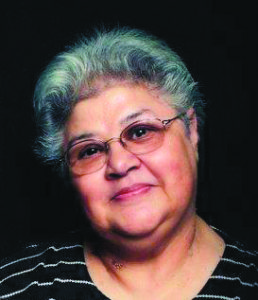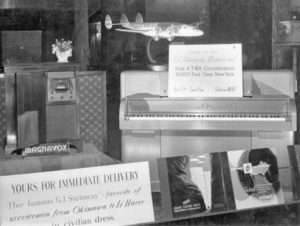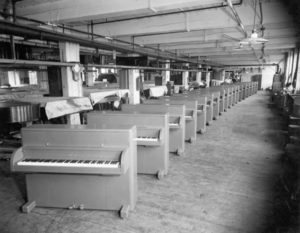

Steinway & Sons was founded by a German immigrant named Heinrich Engelhard Steinweg (later changed to Steinway) in 1853. Heinrich began building pianos in 1835, and by 1839 his reputation as a piano builder grew throughout the Braunschweig area. In 1850 Heinrich immigrated to the United States with his family, taking jobs with several different piano manufacturers. In 1853 Heinrich and his sons (Theodore, Charles, and Henry) founded the Steinway and Sons piano company. The Steinway family was known for their engineering and scientific innovations, which are shown through their many patented ideas.
The very first Steinway & Sons patent was granted in 1857, and since that time the company has been granted more than 125 additional patents, positioning the Steinway as the piano by which all others are judged.

By the late 1800’s Steinway gradually moved their manufacturing facilities from their loft on Varick Street in Manhattan to Queens, New York. Over the next thirty years, Henry and his sons developed the modern piano. They built their instruments one at a time, applying skills that have been handed down from master to apprentice, generation after generation.
During World War II, Steinway was prohibited from building instruments due to government restrictions on iron, copper, brass, and other raw materials, as was nearly every other domestic instrument-maker. Those resources were diverted to the war effort and piano makers were forced to manufacture other products or go out of business. Steinway’s New York factory stayed open by constructing tails, wings, and other parts for troop transport gliders. As the war continued, Steinway & Sons was also contracted to make coffins for the National Casket Co., a venture that was both morbid and unprofitable.

After Theodore E. Steinway received a request from the U.S. government’s War Production Board for heavy-duty military pianos, the first prototype for the Victory Vertical (also called G.I. Steinways) pianos was prepared for government inspection. Because Theodore had four of his own sons serving in the military along with several of their cousins, he instantly recognized music’s potential for boosting troop morale. Henry Z. Steinway and Roman de Majewski developed the plan to build a small, lightweight, inexpensive upright piano that could be packed into a crate and shipped to soldiers in the field with that goal in mind.
During World War II, Steinway & Sons airdropped pianos with large parachutes and complete tuning instructions into the battle for the American troops. Called the Victory Vertical or G.I. Steinways, the pianos were to provide a bit of relaxation.
The 40-inch pianos were boxlike and came with sheet music, instructions and tools for tuning and repair, as well as handles for easy transport. Steinway had to make do with nontraditional materials for these pianos. Keys were made with coverings of white celluloid and soft iron was used instead of copper for windings on the bass strings due to the copper restriction. While the pianos were painted with “three coats of olive drab lacquer, slightly dulled,” other colors were used for the Navy, Marines, Army Air Corps, and Coast Guard.
The War Production Board initially requested 405 of these O.D.G.I. (Olive Drab Government Issue) “field” pianos. The response to that first shipment was so great, 800 more orders rolled in for these pianos eight months later. The U.S. Armed Forces eventually bought 589 pianos so that each unit would have four of its own pianos. By the time production ended in 1953, Steinway had shipped more than 2,400 pianos to soldiers on three continents, which provided countless hours of diversion, education, entertainment, worship, enrichment, and outreach had been provided for the troops.
By the time the war ended, Steinway had shipped approximately 5,000 instruments, but not all went to the military. Some were bought by religious organizations, educational institutions, hotels and other places of public gatherings as they were deemed to be “approved essential users.”
Source: www.messengernews.net; www.steinway.com; Wikipedia.com; ellispiano.com; es.slideshare.net; sandiegoairandspace.org
No Comments
Leave a comment Cancel